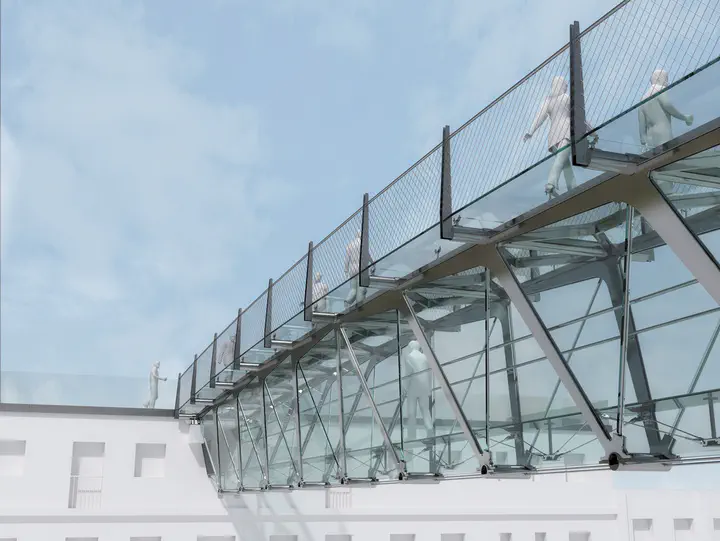
Abstract
Transparency and structural lightness are inspiring ideas in the design of footbridges. Glass is the most performing transparent material to be used for structural purposes because of its high compressive strength, chemical stability, and absence of fatigue and viscosity phenomena at room temperature. However, its fragility constitutes a challenging limit in structural applications. This research provides and discusses a specific concept named TVTδ (Travi Vitree Tensegrity) for lightweight long-span beam-like footbridges made of structural glass. Hence, two design approaches of fail-safe design (FSD) and damage avoidance design (DAD) are applied to guarantee adequate safety levels and postcracking serviceability, respectively, with low damages on the main components. FSD provides the adoption of structural collaboration between glass and steel. Following DAD, glass is segmented into triangular panels, and reciprocal diffuse prestress is performed by steel tendons. This strategy assures low rehabilitation costs because only collapsed elements should be replaced once failed. At ultimate limit state (ULS), the TVTδ footbridge attains a global ductile behavior in which the yielding of steel tendons occurs before any fragile failure. Such result is achieved through a hierarchic calibration of the chain of failures. In glass panels, which are mostly precompressed, the buckling failure, representing the main risk, is delayed by the mutual stabilization of the panels’ compressed edges with steel clamping. However, because an accidental event may cause a localized or diffuse brittle failure of glass components, the system is designed to maintain a residual load bearing capacity in this scenario. At the serviceability limit state (SLS), the TVTδ footbridge is highly stiffened by the presence of glass panes, partially encased in metallic frames. Crack initiation is delayed by precompression.